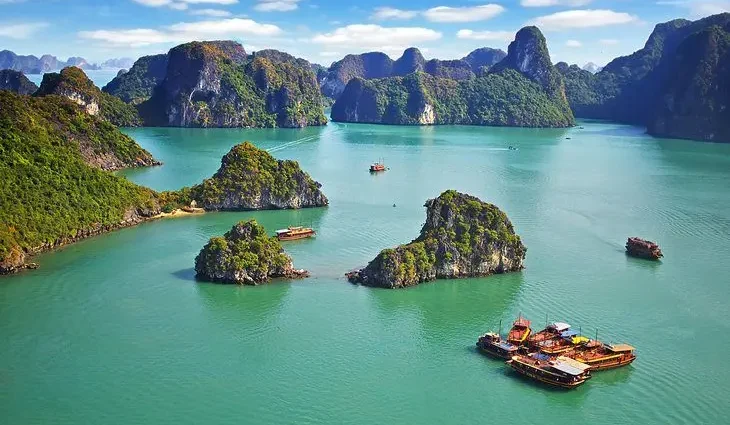Contents
- 1. Halong Bay
- 2. Ho Chi Minh City
- 3. Hue
- 4. Phong Nha-Ke Bang National Park
- 5. My Son
- 6. Hoi An
- 7. Sapa Countryside
- 8. Hanoi
- 9. Nha Trang
- 10. Cu Chi Tunnels
- 11. Ba Be National Park
- 12. Mekong Delta
- 13. Cat Ba Island
- 14. Ha Giang
- 15. Phu Quoc Island
- 16. Con Dao Islands
- 17. Mui Né
- Frequently Asked Questions
- When is the best time to visit Vietnam?
Vietnam is an astonishing mix of natural highlights and cultural diversity.
The scenery ranges from jagged peaks seen from winding mountain passes down to verdant paddy fields painted every shade of green in the palette, while Vietnam’s long history and multicultural population (with over 50 ethnic minority groups) make a trip here rich in heritage.
Outdoor lovers can get their teeth into the countryside within the numerous national parks, where hiking, biking, and kayaking are popular things to do, but Vietnam’s most famous natural tourist attraction, the spectacular karst seascape of Halong Bay, is one natural sight that even the more slothful can experience up close on a cruise.
While the rural areas brim with lush panoramas, the big cities buzz with contemporary life and provide ample opportunities to get stuck into Vietnam’s tasty culinary highlights.
This fascinating country is full of surprises and is one of Southeast Asia’s most underrated destinations. Plan your sightseeing with our list of the best places to visit in Vietnam.
1. Halong Bay
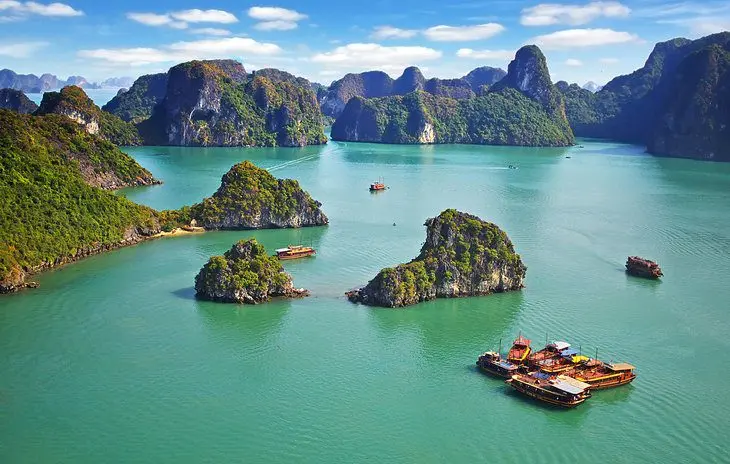
The karst seascape of Halong Bay is one of the best places to visit in the world for spellbinding sea views and is a UNESCO World Heritage Site.
Thousands of limestone islands sit within this bay in the Gulf of Tonkin, eroded into jagged pinnacles by wind and water action over millennia.
With the bay’s scenery best seen by boat, this is prime cruising territory. Opt for at least an overnight tour to see Halong Bay’s iconic views as a day trip doesn’t do it justice.
There are plenty of caves in the bay that can be entered including the Hang Sung Sot, with three mammoth caverns, and the Hang Dao Go, with superbly weird stalagmites and stalactites. For most people though, the highlight is simply cruising amid the karsts and soaking up the changing scenery of pinnacles as you pass by.
There are plenty of different cruise tours to choose from. Check the different itineraries offered before booking as many travelers have left Halong Bay underwhelmed by their cruise.
Author’s Tip: If possible, book a tour that takes in neighboring Lan Ha Bay as well as Halong Bay. The karst scenery is just as dramatic here but fewer cruise trips visit. And check if your cruise offers included activities such as guided kayaking (which allows you to experience an up-close view of the scenery).
2. Ho Chi Minh City
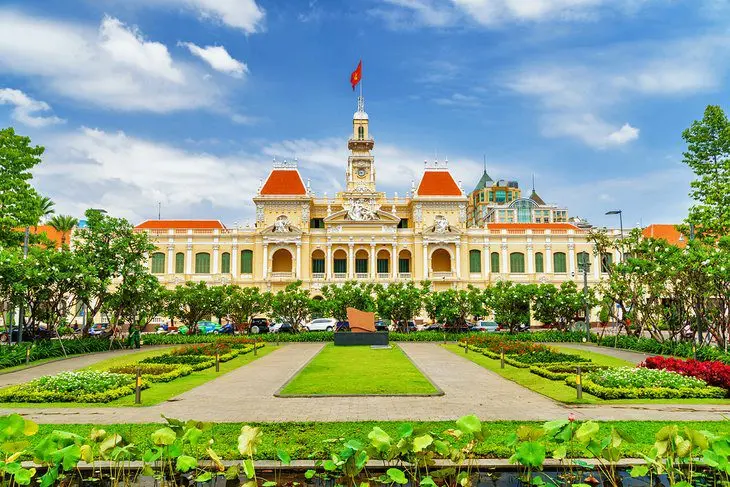
For big city fans, no visit to Vietnam is really complete without a visit to Ho Chi Minh City, the buzzing commercial hub of the country.
The streets are an insane clog of motorbikes and cars, the restaurant and café scene is incredibly cosmopolitan, and the shopping is the best in the country.
At its center is Dong Khoi, a relatively small and easily navigable central district, which holds most of the city’s sights.
Here, you’ll find the HCMC Museum, with a brilliant collection of artifacts that weaves together the story of the city, and the grand Notre Dame Cathedral, built in the late 19th century.
Check out the old district of Da Kao nearby for some of the best surviving examples of the city’s French colonial architecture and also to visit the Jade Emperor Pagoda with its dazzling array of Buddhist and Taoist religious iconography.
Afterwards, the History Museum is a must-do for history fans with stacks of relics on display from various archaeological sites.
For many visitors, the two big-hitter tourist attractions not to miss are just a little out of the center, along Nguyen Thi Minh Khai Street. The Reunification Palace, then known as Independence Palace, was the residence for South Vietnam’s president. It’s chiefly famous as the spot where North Vietnam’s tanks stopped on 30 April 1975, officially ending the war. It’s a completely fascinating place to visit complete with 1960s furnishings still in situ.
Nearby is the War Remnants Museum, which although very obviously biased, paints a disturbing picture of the brutality of war and the many atrocities committed by US Forces during their Vietnam campaign.
3. Hue
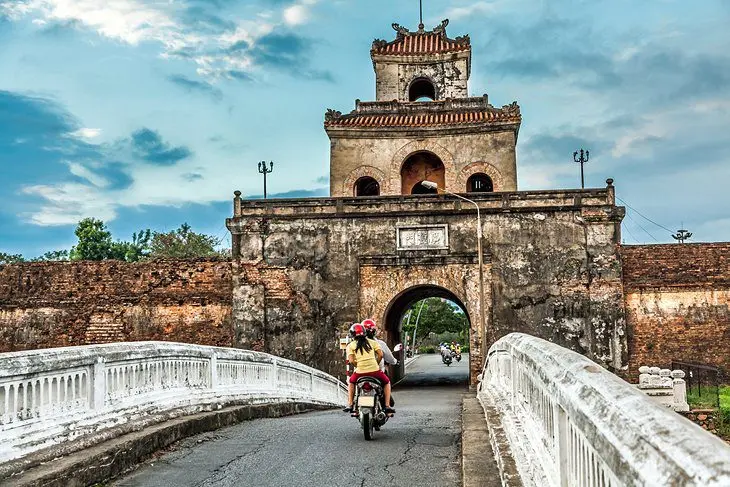
One of Vietnam’s most historic towns, Hue is packed to the brim with relics from the reign of the 19th-century Nguyen emperors.
Sitting along the banks of the gorgeous Perfume River, the Imperial Enclosure is a huge site set within walls that sprawl for 2.5 kilometers.
While touring the grounds check out the gorgeous Ngo Mon Gate, the Thai Hoa Palace with its finely lacquered interior detailing, the Dien Tho Residence where the Queen Mothers would live, and the Halls of Mandarins with its preserved ceiling murals.
A dazzling number of historic sites lie outside the Imperial Enclosure walls as well.
One of the nicest ways of visiting a collection of outlying sites is by taking a riverboat cruise on the Perfume River. A day cruise can take you to visit several royal tombs along with some pagodas.
If you’re short on time, the best tomb to visit is the Tomb of Tu Doc and the most important pagoda in the area is the Thien Mu Pagoda, with its tower that soars for 21 meters high.
4. Phong Nha-Ke Bang National Park
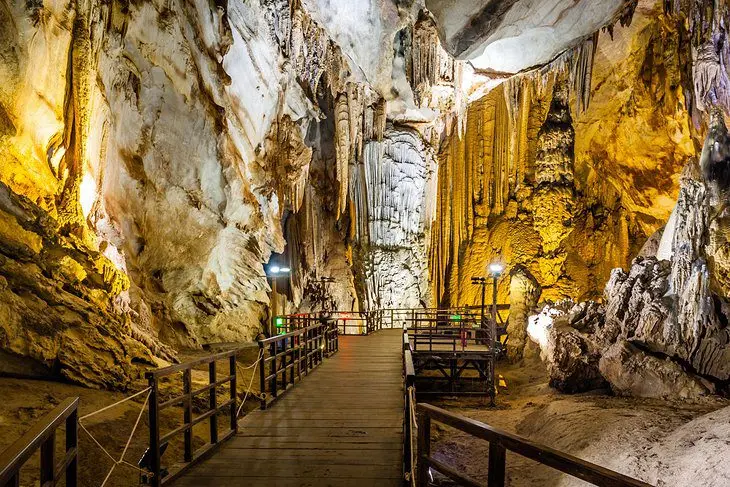
One of the best places to visit in Vietnam for caving, World Heritage-listed Phong Nha-Ke Bang National Park is a dramatic karst mountain formation honeycombed with huge caverns, which are home to superb stalactite and stalagmite displays.
It’s best known for its caving activities, which range from multi-day hiking and caving tours for the more adventurous, to simpler half-day trips to caves with easy access provided by boat trips and modern boardwalks, but the national park also offers mountain biking and trekking activities.
The most popular destinations within the park are the Paradise Cave, which extends for a staggering 31 kilometers below ground, and the Phong Nha Cave, where the interior is accessed by boat. Half-day tours can be easily arranged once you’re in the area.
The national park’s most renowned caverns though are Son Doong Cave (the world’s largest cave), and the Tu Lan Cave with its cavern river system. Access to these, and to certain other caves in the park are restricted to organized tours (ranging from one-day to multi-day expeditions) which are all run by Phong Nha’s expert adventure tour company Oxalis. It’s well worth booking in advance to secure your spot.
To make the most of your time here, time your visit for outside the rainy season, which runs from October to December, when many of the national park’s caves are closed to the public.
You can access Phong Nha-Ke Bang National Park from Son Trach (also known as Phong Nha village).
5. My Son

Surrounded by lush jungle-covered mountains, My Son is a ruined Cham era temple city that dates from the 4th century.
This old Hindu religious center was still very much in use during the 7th to 10th centuries and only fell into complete decline and abandonment during the 13th century.
There are around 20 temple structures still standing here, all built of brick or sandstone blocks and showing interesting influences from various Asian empires, including Indian and Malay.
Note that the temples of Group B are the oldest, while Group A once contained the site’s most important monument but was destroyed deliberately by US forces during the Vietnam War.
A good museum on-site houses plenty of information on the Cham.
Access to My Son is from Hoi An.
6. Hoi An

Beautiful Hoi An is the most atmospheric city in Vietnam, with bags of surviving historic architecture.
The old town quarter is a joy to explore, packed to the brim with well-preserved merchant houses that hark back to Hoi An’s trading center heyday of the 15th century, when the town was a major meeting point for Japanese and Chinese merchants who flocked here for the local silks.
Plenty of the old merchant houses have been opened to the public, so you can get a taste of these times. The best is 17th-century Tan Ky House, with fascinating architectural and decorative elements.
Hoi An’s major symbol is the delightful Japanese Bridge at the western end of Tran Phu Street, while nearby, the Assembly Hall of the Fujian Chinese Congregation is the old town’s most highly decorated temple.
There are numerous small pagodas and museums dotted about town, but Hoi An’s true charm is found in simply rambling the old town streets admiring the well-preserved facades.
7. Sapa Countryside
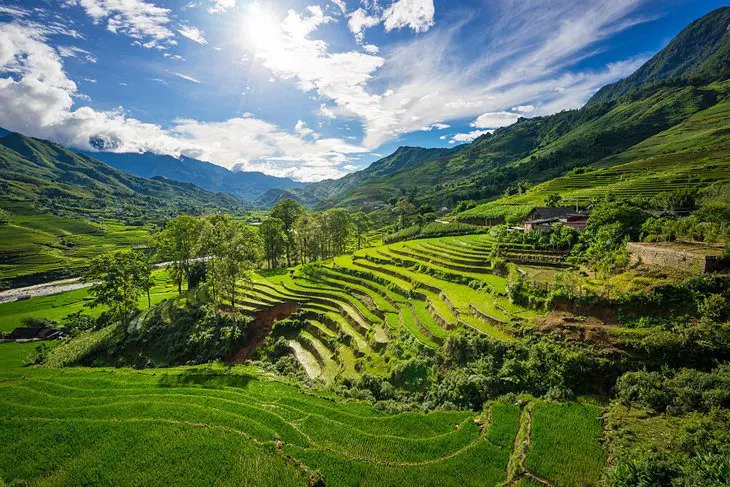
The verdant rice field countryside surrounding Sapa, bordered by the jagged peaks of the Hoang Lien Mountains (often still known by their French colonial era name of the Tonkinese Alps), are home to Vietnam’s most beautiful rural vistas.
The deep valleys here are home to a diverse mix of the country’s ethnic minorities, including the Hmong, Giay, and Red Dzao people, while the rippling hills are terraced with rice fields and overlooked by the country’s tallest peak, Fansipan Mountain.
This is the top trekking destination in Vietnam with oodles of options to trek or day hike between tiny villages and experience the staggering mountain views.
Sapa itself is the main base here – an old hill station and now a bustling and forever growing tourist center that is a stark contrast to the sumptuous tranquil countryside right on its doorstep.
Author’s Tip: Keen trekkers looking for more of northern Vietnam’s lush mountain vistas may want to skip the busy Sapa scene completely and nudge further 95 kilometers northwest to Bac Ha, where the terraced hill views on hikes between hill villages are just as beautiful. Bac Ha’s Sunday market is also a very popular day trip from Sapa.
8. Hanoi
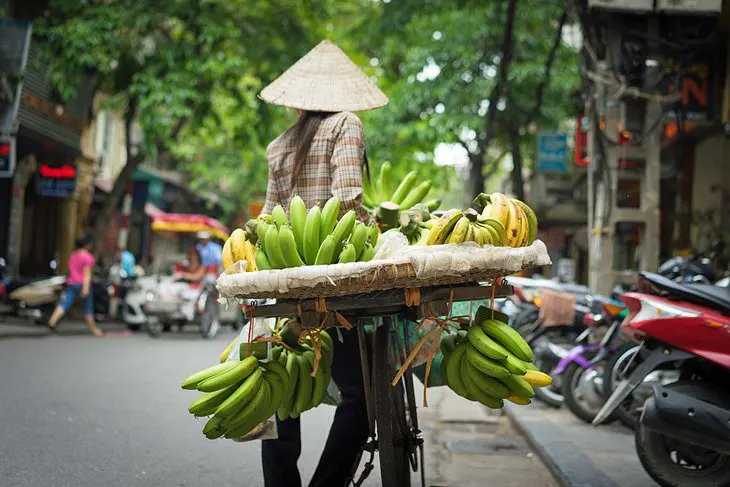
Vietnam’s capital is the frenetic heartbeat of the nation and a place that befuddles travelers as much as it charms them.
The motorbike frenzy, pollution, and constant clamor of street vendors can get too much for some travelers, but if you want to dive into Vietnamese city life, Hanoi is the place to do it.
The old town quarter has plenty of dilapidated charm on offer, while history fans should make a beeline here simply to see the bundle of excellent museums.
The Vietnam Museum of Ethnology and Vietnam Fine Art Museum are both brilliant introductions to the diverse artistry of the country, while the Ho Chi Minh Mausoleum is an important tribute to the founder of modern Vietnam.
Author’s Tip: It’s well worth adding extra time into your itinerary to use Hanoi as a base for exploring the many sights within day tripping distance. In particular, the Tay Phuong and Thay Pagodas (30 kilometers west from the central city), Co Loa Citadel (24 kilometers northeast), and the Huong Pagoda (also known as the Perfume Pagoda; 60 kilometers southwest).
- Read More: Top-Rated Tourist Attractions in Hanoi
9. Nha Trang

For sandy fun in Vietnam, Nha Trang is king. The well-maintained beach trundles for six kilometers along the shoreline of central Nha Trang city and during summer is jam-packed with local families on vacation, as well as foreign visitors.
There is excellent swimming here with designated swimming areas and manicured lounging areas that make this a great option for relaxing days soaking up the sun and sand.
If you do get bored of sunbathing, the ancient Po Nagar Cham Towers are just to the north across the Xom Bong Bridge and have been used as a place of worship here since at least the 7th century (with some historians saying the site itself has been a place of active worship since much earlier).
There is also an excellent museum dedicated to the work of Alexandre Yersin who discovered the cause of the bubonic plague and founded Nha Trang’s Pasteur Institute (which still carries out vaccination programs in Vietnam today).
10. Cu Chi Tunnels
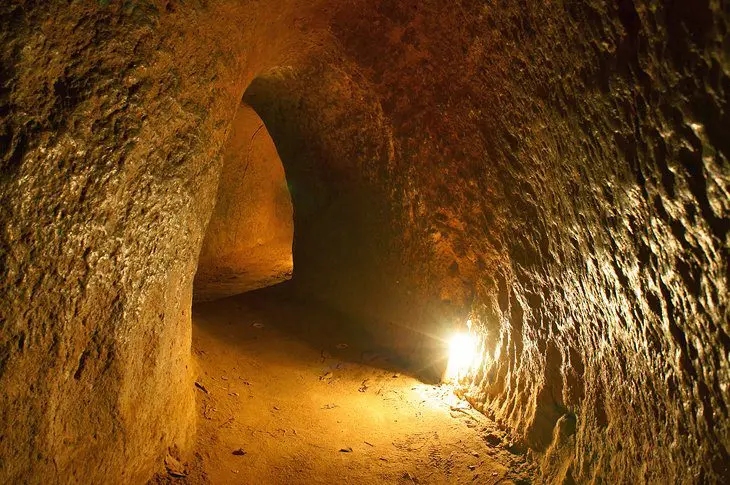
An absolutely fascinating experience for all travelers, not just those interested in Vietnam’s modern military history, the Cu Chi Tunnels are an extensive tunnel network that during the war, stretched for more than 250 kilometers, allowing VC troops to operate and communicate in the area surrounding Ho Chi Minh City.
Two short sections of the network can be visited with a guide who’ll take you down into the narrow unlit confines, which definitely are not for claustrophobia sufferers.
You will literally be crawling on your hands and knees and some points. You can access the tunnels at either Ben Dinh village (the more popular choice) or Ben Duoc village.
11. Ba Be National Park
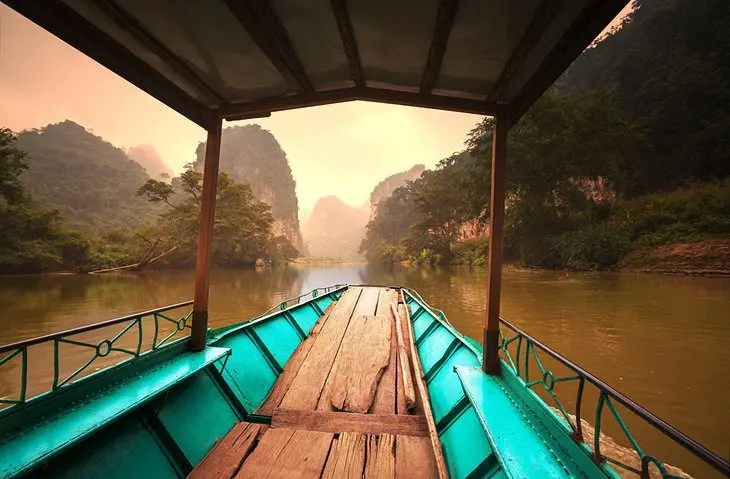
Tranquil Ba Be National Park is absolutely stunning with the three interlinked Ba Be Lakes at its heart, rimmed by jagged karst peaks and thickly forested slopes.
Most visitors come here to take peaceful boat trips or kayak on the lake and explore the caves full of stalactites and stalagmites in the vicinity, but for the more active, there’s also excellent hiking and trekking in the hills here between ethnic minority villages.
This is one of the most peaceful spots in Vietnam, and travelers who spend the night here sleep in traditional stilt-house homestay accommodation along the lakeshore, allowing an experience of simple rural life.
12. Mekong Delta
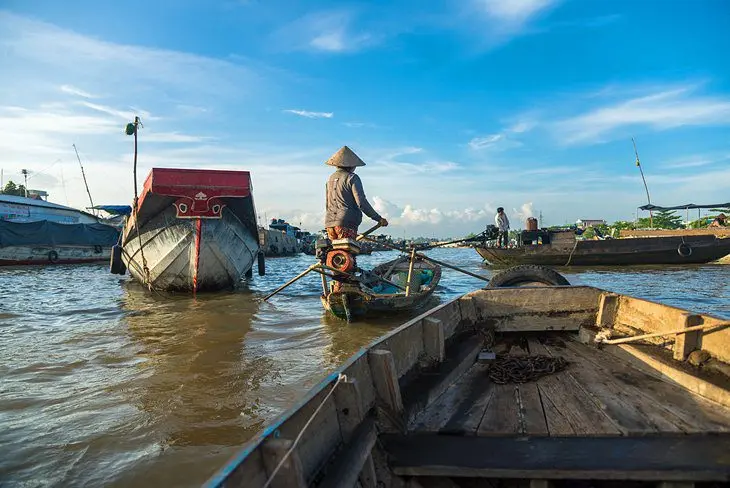
The far south of Vietnam is where the mighty Mekong River finally finds its way to the sea in a maze of waterways that crisscross the floodplain.
Incredibly lush, with paddy field vistas and mangroves, and full of local life, with chaotic floating markets to explore by boat, the delta is one of the most interesting regions for travelers to discover.
Can Tho is the most popular town to use as a base, as it’s close to the floating markets of Phong Dien and Cai Rang, while boat trips from Ca Mau allow you to explore the U Minh Mangrove Forest and Cau Mau Nature Reserve.
This area of Vietnam is one of the best to visit for keen bird watchers and nature lovers, as it is home to both Tra Su Bird Sanctuary Forest and Bac Lieu Bird Sanctuary.
13. Cat Ba Island

One of Vietnam’s major centers for activities and adventure travel attractions, Cat Ba Island sits on the western edge of Halong Bay.
This is the best place to visit if you want to organize cruises and kayaking trips in Lan Ha Bay, which lies off Cat Ba’s southern coast. Lan Ha Bay is a less visited seascape of karst islets and outcrops that makes for a quieter alternative to Halong Bay.
Off the water, much of Cat Ba’s dense jungle interior is part of Cat Ba National Park, where hikers can spot plentiful birdlife, as well as animals such as macaques.
For many visitors, though, Cat Ba is all about climbing opportunities. Climbing excursions here utilize both the island’s limestone cliffs and Lan Ha Bay’s outcrops, providing experiences to suit both complete climbing beginners and experienced climbers.
14. Ha Giang
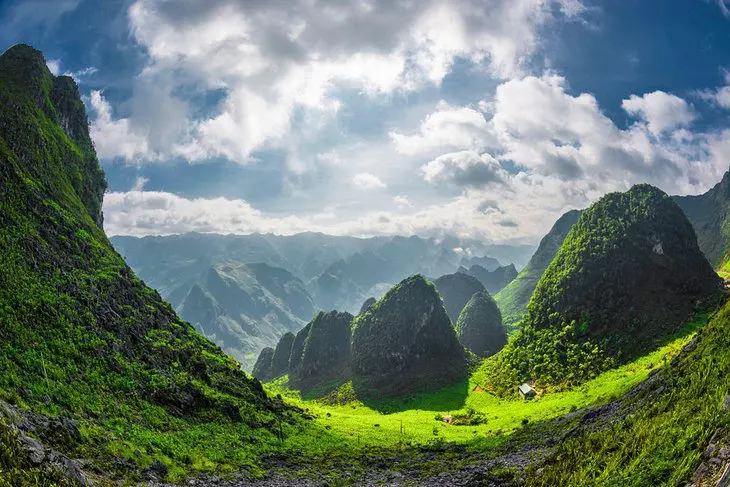
The emerald-green karst mountain landscapes along Ha Giang’s mountain passes make this far-north province prime territory for scenic road-tripping by either motorbike or car.
In particular, the twisty Quan Ba Pass between Ha Giang town and Tam Son provides panoramic vistas of the karst plateau and its jagged limestone outcrops, while the zigzagging Mai Pi Leng Pass between Dong Van and Meo Vac offers dizzying views of the lush mountain scenery and narrow valleys below.
Time your visit to coincide with one of the area’s market days, when traders from the surrounding mountain villages pile into town. Dong Van’s Sunday market is one of the best.
15. Phu Quoc Island
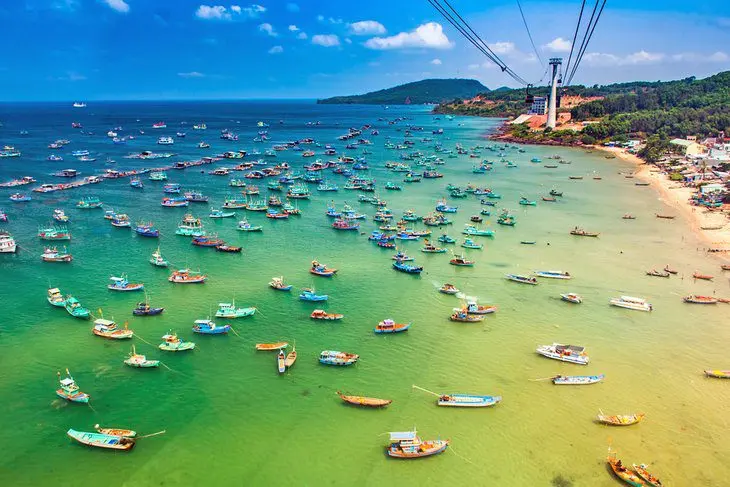
Sitting 45 kilometers off the southern coast of the country, in the Gulf of Thailand, Phu Quoc is a densely forested island, speckled by sweeps of white-sand beach that attract plenty of sunseekers during the winter dry season.
Dry season (November to May) is also when the island’s underwater and on-the-water tourism attractions spring into action, with plenty of dive sites in the waters just offshore, as well as opportunities for snorkeling, kayaking, and boat trips.
Many of the main boat excursions head to the An Thoi Islands, just to the south of Phu Quoc, which is home to the best snorkeling in the area.
Off the water, the Phu Quoc cable-car provides bird’s-eye views for eight kilometers, soaring over the seascape and islands, all the way from Phu Quoc to the island of Hon Thom in the An Thoi Islands.
Phu Quac is accessed by plane or regular ferries from the mainland towns of Rach Gia and Ha Tien. As Ha Tien lies very close to the southern border crossing with Cambodia, the island is a popular first (or last) stop-off in Vietnam for overland travelers.
16. Con Dao Islands
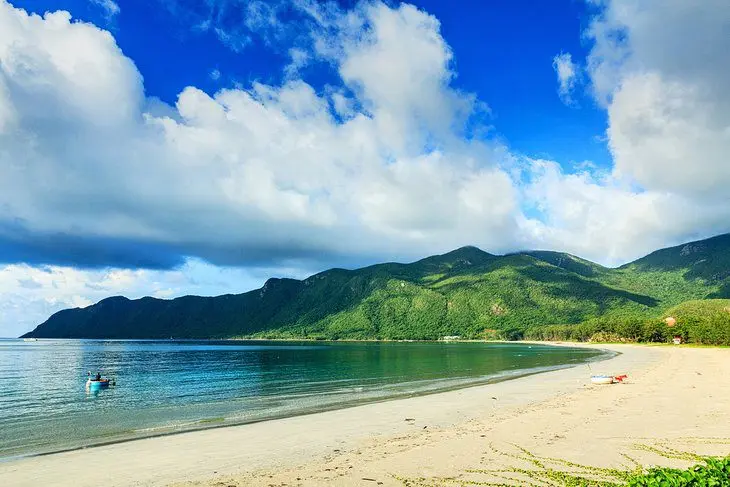
This remote island group lies around 160 kilometers offshore in the South China Sea and is renowned among divers as one of the best places to visit in the country, both for the variety of sea life and for the coral reefs.
Much of the Con Dao Islands, and the surrounding water, is a protected wilderness area, with the island shores home to nesting turtles, and dense forest still covering the island interiors.
The main island, and prime base for visitors with all the accommodation and things to do, is Con Son Island, which has sweeps of sand strung out across its coast that attract beachgoers looking for a relaxed sun-soaked getaway, as well as divers.
Even if you’re here mostly for the beach, make sure to explore the historic sites of Con Son Town (the island’s only settlement) including Phu Hai Prison, Bao Tang Con Dao Museum, and the prison known as the Tiger Cages, which document the dark history of this isolated island group.
Con Son’s remote position led to the island being used to incarcerate political prisoners during the era Vietnam was occupied by French colonial forces, and later by both the South Vietnamese government and the occupying American forces.
Preserved sites including Phu Hai Prison and the prison cages used by the US forces, known as the Tiger Cages, along with Con Son Town’s Bao Tang Con Dao Museum, do an excellent job of documenting this history for visitors.
Access to Con Son Island is either by flight from Ho Chi Minh City or by ferry from the coastal city of Vung Tau.
17. Mui Né
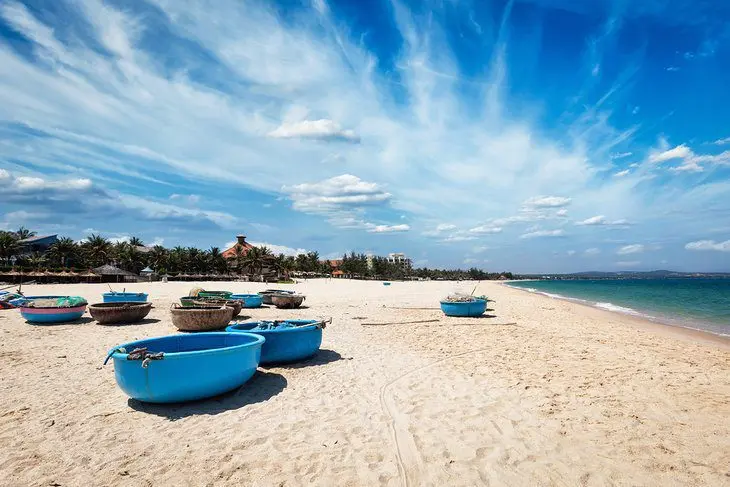
Once a sleepy coastal fishing town, Mui Né has developed into a beautiful beach resort town and a prime destination for windsurfing, sailing, and kitesurfing.
Compared to other beach destinations in Vietnam, however, Mui Né remains relatively unknown – and this means pristine beaches and a quiet retreat for most of the year.
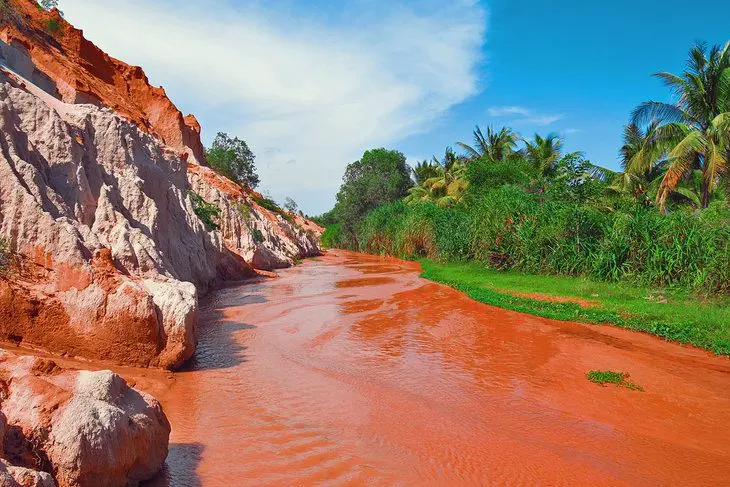
One of Mui Né’s most unique attractions is the natural Red Sand Dunes just outside town, where visitors can practice sand-sledding or rent dune buggies for a more adrenaline-charged experience.
Tucked away between nearby fishing villages and towering orange limestone formations, there’s the fairy stream, a slow-moving warm stream that almost feels like a walkway because it’s so shallow – follow it to the end to reach a waterfall.
For those wishing to explore beyond the coastline, there are also the ruins of the Po Shanu Cham Towers – remnants of the Cham Empire that dominated the area many centuries ago.
Frequently Asked Questions
When is the best time to visit Vietnam?
Vietnam experiences strong monsoon seasons, where heavy rains hit the cities and the countryside, often causing floods and mudslides. If you’re planning to travel around, the best time to visit Vietnam is during the dry season, which lasts from December to February – but there are some exceptions.
The south of Vietnam – where Ho Chi Minh city is located – experiences a more tropical climate, with high temperatures and high humidity year-round. Visiting these areas in the cooler months means less humidity and temperatures in the high 20s rather than the high 30s and 40s, which makes it more comfortable to walk around.
In the north, however, many areas experience an actual winter. Hanoi sees temperatures in the mid- to high teens in December and January – and in the mountains of Sapa in the north, you’ll even get to see some snow during these months.
If you’re visiting Danang for some beach time or to travel through the ancient town of Hoi An, it’s best to arrive between February and May, when water and air temperature are in the 20s – perfect beach weather for enjoying the sand or a dip in the water. The rainy season, and especially the months of September and October, see very heavy rains and often very strong wind storms on the coast, so it’s better to stay away from Danang during this time.










